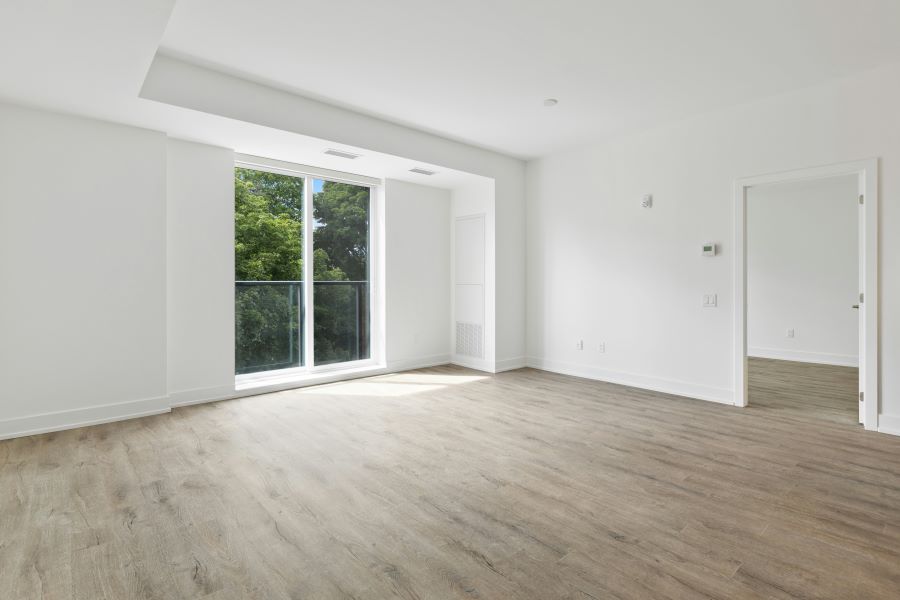A lock-in, also known as a rate lock, is an agreement between a borrower and a lender that secures the interest rate on a mortgage loan for a specified period. This period typically ranges from 30 to 60 days, but it can vary depending on the lender and the specific terms of the agreement.
The primary purpose of a rate lock is to protect the borrower from interest rate fluctuations during the mortgage approval process, ensuring that the borrower will receive the agreed-upon interest rate even if market rates increase.
If you are looking for a small loan to refurbish your home, then why not get a personal loan with terms and conditions that are more favourable for you? Download the Airtel Thanks app and take a look at the best personal loan offers, with low processing charges and less documentation too!
How a Rate Lock Works
A rate lock involves several key steps and considerations for both the borrower and the lender. Understanding how this process works can help borrowers make informed decisions when securing a mortgage.
Initiating the Rate Lock
The rate lock is typically initiated during the mortgage application process. Once the borrower decides to lock in the mortgage interest rate, the lender confirms the current market rate and secures it for the agreed period. This agreement is often documented in writing to ensure both parties understand the terms and conditions.
Lock-In Period
The lock-in period is the duration for which the interest rate is secured. During this period, the borrower and the lender work towards finalising the mortgage. The length of the lock-in period can vary, but common durations are 30, 45, or 60 days. Some lenders may offer longer lock-in periods, but these may come with higher fees or conditions.
Read more: Loans to amplify investment returns
Fees and Costs
Some lenders may charge a fee for locking in an interest rate. This fee can be a flat amount or a percentage of the loan amount. It’s important for borrowers to understand these costs upfront, as they can impact the overall cost of the mortgage. In some cases, the fee may be refundable if the mortgage closes within the lock-in period.
Rate Lock Extensions
If the mortgage process is not completed within the initial lock-in period, the borrower may need to request a rate lock extension. This extension can incur additional fees, and the terms may vary depending on the lender’s policies. Borrowers should be aware of these potential costs and plan accordingly to avoid unexpected expenses.
Floating vs. Locking In
Borrowers have the option to either lock in their interest rate or let it “float.” Floating means that the interest rate is not secured, and the borrower accepts the risk that market rates may increase before the mortgage closes. Locking in the rate provides certainty and protection against rising rates, but if market rates decrease, the borrower may miss out on a lower rate.
Read more: How to refinance your second home?
Benefits of a Rate Lock
Securing a rate lock offers several advantages for borrowers, making it an important consideration during the mortgage application process.
Protection from Market Fluctuations
The primary benefit of a rate lock is protection from interest rate fluctuations. Once the rate is locked, the borrower is shielded from any increases in market rates during the lock-in period. This provides peace of mind and financial predictability, allowing the borrower to budget effectively.
Certainty in Financial Planning
A rate lock provides certainty in financial planning by ensuring that the mortgage payments will be based on the agreed-upon interest rate. This predictability helps borrowers plan their finances more accurately and avoid surprises.
Competitive Advantage
In a competitive housing market, having a rate lock can provide a strategic advantage. Sellers may prefer buyers who have secured their financing, as it reduces the risk of the deal falling through due to financing issues. A rate lock demonstrates the borrower’s commitment and financial readiness.
Read more: Documents needed to apply for a home loan

Rate Locks in the Indian Mortgage Market
In India, the concept of rate locks is gaining traction, particularly in the context of home loans. Indian borrowers can benefit from understanding how rate locks work and how they can be used to secure favourable mortgage terms.
Availability of Rate Locks
While rate locks are more common in Western markets, they are becoming increasingly available in India. Major banks and financial institutions are offering rate lock options to attract borrowers and provide competitive mortgage products. Borrowers should inquire about the availability of rate locks when shopping for a home loan.
Fixed vs. Floating Rate Loans
Indian borrowers often choose between fixed and floating rate home loans. A fixed rate loan offers an interest rate that remains constant throughout the loan tenure, providing long-term predictability. In contrast, a floating rate loan has an interest rate that fluctuates with market conditions. A rate lock is particularly relevant for floating rate loans, as it can secure the interest rate during the application process, protecting the borrower from potential rate hikes.
Regulatory Framework
The Reserve Bank of India (RBI) regulates the mortgage market and provides guidelines for lenders. Borrowers should be aware of these regulations and ensure that any rate lock agreement complies with RBI guidelines. Understanding the regulatory framework can help borrowers make informed decisions and avoid potential pitfalls.
Negotiating Rate Locks
Indian borrowers can negotiate rate lock terms with their lenders to secure the best possible deal. This negotiation can include the duration of the lock-in period, fees, and any conditions for extensions. Being proactive and well-informed can help borrowers leverage rate locks to their advantage.
Read more: Tips to get personal loan without income proof
Common Questions About Rate Locks
1. What is the main purpose of a rate lock?
The main purpose of a rate lock is to secure the interest rate on a mortgage for a specified period, protecting the borrower from interest rate fluctuations during the mortgage approval process.
2. How long does a typical rate lock last?
A typical rate lock lasts between 30 to 60 days, but some lenders may offer longer or shorter periods depending on their policies and the borrower’s needs.
3. Are there fees associated with rate locks?
Yes, some lenders may charge a fee for locking in an interest rate. This fee can vary based on the lender, the loan amount, and the duration of the lock-in period.
4. What happens if the lock-in period expires before the mortgage closes?
If the lock-in period expires before the mortgage closes, the borrower may need to request a rate lock extension. This extension can incur additional fees, and the terms will depend on the lender’s policies.
5. Can a borrower switch lenders after locking in a rate?
Switching lenders after locking in a rate can be challenging and may incur penalties or fees. Borrowers should carefully review the terms of their rate lock agreement and consult with their lender before making any changes.
6. Is a rate lock available for all types of home loans in India?
Rate locks are becoming more common in India, particularly for home loans. However, availability may vary among lenders, so borrowers should inquire about rate lock options when shopping for a mortgage.
Understanding the concept of a rate lock is crucial for borrowers navigating the mortgage market in India. It offers protection against interest rate fluctuations, provides financial certainty, and can give borrowers a competitive edge in the home buying process. By leveraging rate locks effectively, borrowers can secure favourable mortgage terms and achieve their homeownership goals with confidence.



